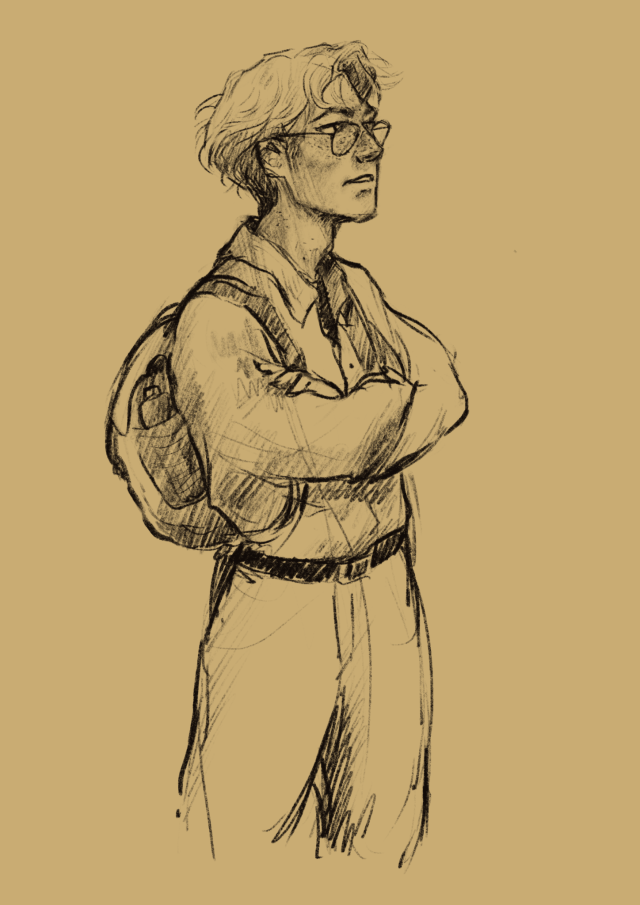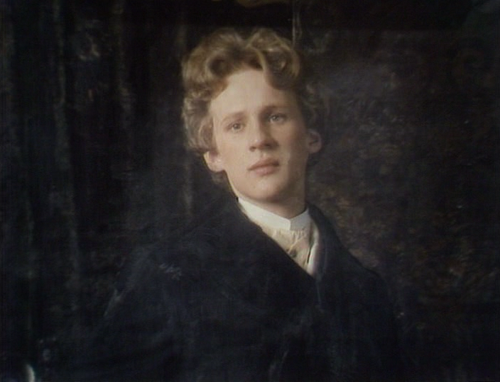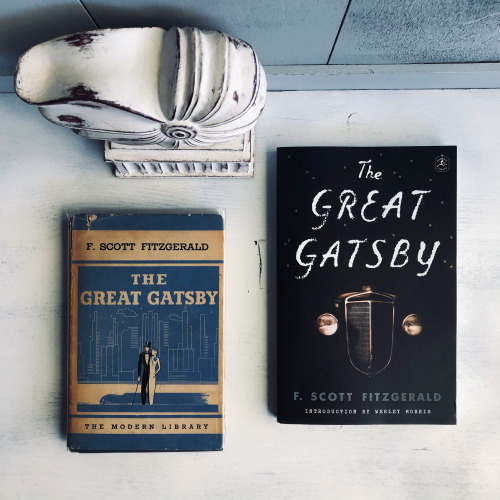#favourite books
21 Books I Loved in 2021
What were some books you read and loved in 2021?
Favourite Books → Cress by Marissa Meyer
“Captain,” she murmured.
“I think I’m in love with you.”
An eyebrow shot up. She counted six beats of his heart before, suddenly, he laughed.
“Don’t tell me it took you two whole days to realize that. I must be losing my touch.”
Post link
Favourite Books → The Fever by Megan Abbott
“I have another friend who gets what I’m really like, and I get her. She scares me. Did you ever see yourself times ten in another person and want to cover your eyes?”
Post link
Favourite Books → Blue Lily, Lily Blue by Maggie Stiefvater
“You can be just friends with people, you know,“ Orla said. "I think it’s crazy how you’re in love with all those raven boys.”
Orla wasn’t wrong, of course. But what she didn’t realize about Blue and her boys was that they were all in love with one another. She was no less obsessed with them than they were with her, or one another, analyzing every conversation and gesture, drawing out every joke into a longer and longer running gag, spending each moment either with one another or thinking about when next they would be with one another. Blue was perfectly aware that it was possible to have a friendship that wasn’t all-encompassing, that wasn’t blinding, deafening, maddening, quickening. It was just that now that she’d had this kind, she didn’t want the other.”
Post link
Favourite Books → Code Name Verity by Elizabeth Wein
“It’s awful, telling it like this, isn’t it? As though we didn’t know the ending. As though it could have another ending. It’s like watching Romeo drink poison. Every time you see it you get fooled into thinking his girlfriend might wake up and stop him. Every single time you see it you want to shout, ‘You stupid ass, just wait a minute,’ and she’ll open her eyes! 'Oi, you, you twat, open your eyes, wake up!Don’t die this time!’ But they always do.”
Post link
“Over the great bridge, with the sunlight through the girders making a constant flicker upon the moving cars with the city rising up across the river in white heaps and sugar lumps all built with a wish out of non-olfactory money. The city seen from the Queensboro Bridge is always the city seen for the first time, in its first wild promise of all the mystery and the beauty in the world.”
-The Great Gatsby, F. Scott Fitzgerald
(left) 1934 Modern Library edition
(right) 2021 Modern Library edition
fromml.books
Post link

leader of our merry men

sparks
I was thinking the other day, about Howl’s Moving Castle and how fascinating a character Sophie is in that book. (And how her movie counterpart doesn’t hold a candle to her in the character motivation department. I mean, having no self-confidence because you think you’re not pretty is fine, I guess, if not a little basic, and Miyazaki does some interesting stuff with it, but compared to book Sophie… I can’t compare them, it’s not fair to movie Sophie! Yet I can’t help it.)
Anyway, book Sophie lives in a fairy tale world, and she knows it, and that’s where her lack of self confidence comes from. She has genre awareness, she knows the Rule of Three. That’s what’s making her say that being the eldest means that she’s doomed to fail at anything, so why bother trying? Even if she can admit that her family doesn’t fit what one would expect from a typical fairy tale set up in a lot of ways (Martha should have been the prettiest one, with Sophie and Lettie being ugly, but Sophie can admit that all three girls - including herself - are pretty, with Lettie being the most beautiful) it doesn’t matter. The Rule of Three trumps all.
Reading the rest of the book, it’s obvious that Sophie isn’t a failure at anything and everything she tries, so the book would appear to be a rebuttal of the Rule of Three, or at least a subversion of it. BUT (and that’s the potential hot take that I just can’t stop myself from sharing anymore), but, maybe not.
Think about it, the Rule of Three isn’t about the order of birth, it’s about the order in which the attempts are made. First attempt gets the least success, the second attempt is more successful, and the third attempt is the most successful of all. Usually, if those attempt are taken by three different people, the order is determined by the birth rank, because primogeniture. But it doesn’t have to be.
Look at the order in which the girls leave their childhood home to seek their fortunes, and at their respective fates.
Martha is the first one to leave. She goes far away but come back within a few weeks in secret, magically takes on Lettie’s appearance and becomes a baker’s apprentice, and by the end of the novel she’s dating Micheal in the hopes of marrying him quickly and have 10 children (spoken like someone who’s never spent any real time with infants). She doesn’t even have her own physical appearance back yet; she only “almost looked like herself again”.
Lettie is the second one to leave. She takes the chance Martha offers her and goes to study under Mrs Fairfax, who only agrees to teach her if she goes back to her true form, which she does. She learns magic, and it’s implied that she caught the eye of Prince Justin, and by the end of the novel she’s offered a chance to be the pupil of the Royal Wizard, Suliman.
Sophie, the third and last one to leave, is the literal protagonist. So much happens to her, I can’t even resume it in a sentence. By the end of the novel, she has played a key role in the destruction of the Witch of the Waste *and* her fire demon, which saved Prince Justin and Wizard Suliman, she freed Calcifer and saved Howl’s life, and she and Howl are prepared to live tumultuously but happily ever after. AND the curse that the Witch placed her on is broken, so she also looks like herself, or at least like her age, once more.
The Rule of Three trumps all, indeed.

One day I determined to paint a wonderful portrait of you. It was to have been my masterpiece. It is my masterpiece. But, as I worked at it, every flake and film of colour seemed to me to reveal my secret. There was love in every line, and in every touch there was passion. I grew afraid that the world would know of my idolatry. I felt, Dorian, that I had told too much. Then it was that I resolved never to allow the picture to be exhibited. You were a little annoyed; but then you did not realize all that it meant to me. Harry, to whom I talked about it, laughed at me. But I did not mind that. When the picture was finished, and I sat alone with it, I felt that I was right. Well, after a few days, the portrait left my studio, and as soon as I had got rid of the intolerable fascination of its presence, it seemed to me that I had been foolish in imagining that I had said anything in it, more than that you were extremely good-looking and that I could paint. Even now I cannot help feeling that it is a mistake to think that the passion one feels in creation is ever really shown in the work one creates. Art is more abstract than we fancy. Form and colour tell us of form and colour, that is all. It often seems to me that art conceals the artist far more completely that it ever reveals him. And so when I got this offer from Paris I determined to make your portrait the principle thing in my exhibition. It never occurred to me that you would refuse. I see now that you were right. The picture must not be shown.
In June of 1890 The Picture of Dorian Gray, a tale of a beautiful young man who makes an entreaty that a portrait of him should age instead of himself and finds it doing horrendously just that, first appeared in Lippincotts Monthly Magazine on both sides of the Atlantic in the U.S. and England. Immediately notable for being Irish writer Oscar Wilde’s first (and only) novel it was also controversial in alluding to a great many subjects scandalizing polite society and seen as too morally vague, if not immoral. By August of 1890 Wilde mentioned 216 writings by critics on The Picture of Dorian Gray, claiming more than half he’d not read. Additional would follow. But he took special exception to three staggeringly negative reviews in the newspapers The Scots Observer, St. James Gazette and Daily Chronicle putting forth opinions about the story being for ‘outlawed noblemen and perverted telegraph boys’,‘so stupid and vulgar a piece of work’and‘a poisonous book’. Wilde in fact engaged in letters to the editors and correspondence back and forth for weeks. Tensions that can’t be ignored. Although prior the story’s first appearance Wilde had already thought of expanding The Picture of Dorian Gray, the story would undergo more changes than previously formed during the pre-publication process plus a particularly memorable preface of numerous aphorisms in the following year culminating in the 1891 edition.
Some four years later The Picture of Dorian Gray would too be a subject in Wilde’s legal battles, passages read out in Wilde’s ill-fated libel lawsuit as he was cross examined. This also later referred to in the first criminal trial against him, however the judge instructed the jury to ignore any literary judgements they might form. Literary questions though were being raised anew elsewhere. As scandals tend to do, publisher John Lane amongst pressure and publicity from the court proceedings removed Wilde from the Bodley Head catalogue. If a public circus in England wasn’t serious enough, in the States members of the press took the opportunity to condemn Wilde’s writing too. Copies of The Picture of Dorian Graywould be removed from libraries in at least two larger cities. The Library Journal however did opine on the question of unobjectionable books being retained despite author reputation. Nevertheless, Oscar Wilde as an author had already from the start been excluded from the American Library Association book list for popular small libraries and branches. (And Wilde would remain blacklisted in the subsequent larger ALAcatalogues until 1926.)
However,The Picture of Dorian Grayamong many other examples of Wilde’s writing has persisted, been adapted (the image used in this post is from the 1976 BBC Play of the Month dramatisation with the role of Dorian played by Peter Firth)and like other tales it drew on retold.
I fell in love with the novel in my youth. Youth also in appearance I have kept, leading to awkward situations and remarks over many years about how I have not changed a day and as to what my secret is. To which I like to quip about keeping a hidden painting of myself in my attic. Quizzical looks are received usually because they do not catch the reference (very disappointing) or if they do, well what would one reply? A chat on an artistic and intellectual exercise in ideas of beauty, pleasure, individuality, domination, transformation, the soul, and a discourse concerning art and life is probably not what most would expect. Familiarity with Dorian Graydoes not necessarily entail one is versed in the aesthetics in Victorian times informed by certain cultural movements, or today a work emblematic of Dark Academia.
Nor an author like Wilde the makings of a proper conversation depending on circumstances. In Oscar Wilde’s Scandalous Summer Antony Edmonds called Wilde the ‘most famous ephebophile of the nineteenth century’. True, countless biographers, historians, academics, storytellers, critics, journalists, and Wilde’s own grandson have brought to bear their own fascination with the man in whatever shape and degree it comes in, just as the public over the years. Simultaneously one of the most famous names and court cases in England and abroad, undoubtedly both complex in their time, yet having too formed into the muddled mythos recounted and still evolving of today.InOscar A life Matthew Sturgis put it perhaps best ‘in his posthumous existence he has assumed quite as many masks as he did during his own life, and with the same élan.’
So, if you’ll bear with me today,
I’ll be further sharing influences and interpretation on Dorian Gray
I know it’s … a bit… late… here are my favourite graphic novel/manga/webtoon reads of 2021 in no particular order (trigger warnings that I noticed in the read more)
Solanin written and illustrated by Inio Asano Death, Car accident, Blood, Sexual content, Grief, Alcohol
Venus in the Blind Spot written and illustrated by Junji Ito translated by Yuji Oniki and Jocelyne Allen Body horror, Gore, Death, Blood, Violence, Murder, Death of a parent, Sexual content, Animal death, Suicide, Sexual assault
The Boy, the Mole, the Fox and the Horse written and illustrated by Charlie Mackesy None that I noticed
Fangirl, Vol. 1: The Manga written by Rainbow Rowell, illustrated by Gabi Nam and Adapted by Sam Maggs Panic attacks/disorders, Mental Illness, Abandonment, Alcohol, Eating disorder
The Reason Why Raeliana Ended up at the Duke’s Mansion written by Milcha and illustrated by Gorae Alcohol, Murder, Animal death, Kidnapping
The Tea Dragon Society written and illustrated by K. O'Neill Blood, Medical trauma, Panic attacks/disorders, Grief
Happiness vol. 1-10 written and illustrated by by Shūzō Oshimi translated by Kevin Gifford Blood, Murder, Violence, Grief, Death, Gore, Child Death, Cannibalism, Death of Parent, Sexual Content, Kidnapping, Bullying, Panic Attacks, Body horror,Child abuse, Animal Cruelty, Gun Violence, Torture, Confinement and Medical content
The Complete Persepolis written and illustrated by Marjane Satrapi translated by Mattias Ripa, Blake Ferris and Anjali Singh Death, Violence, Misogyny, Police Brutality, Suicide attempt, War, Gun violence, Suicidal thoughts, Torture, Religious bigotry, Drug use, Sexism, Murder, Xenophobia, Racism, Grief, Islamophobia, Alcohol, Rape, Homophobia, Child death
The Fire Never Goes Out: A Memoir in Pictures written and illustrated by Noelle StevensonMental illness, Self harm, Panic attacks/disorders, Death, Homophobia, Suicidal thoughts, Body shaming
Sapiens: A Graphic History: The Birth of Humankind (Vol. 1) written by Yuval Noah Harari illustrated by David Vandermeulen and Daniel Casanave I can’t really recall
Post link
(In…almost… alphabetical order, trigger warnings in the ‘keep reading’)
This year… has been a lot… but at least during the first half I read a lot of good books … anyway here are my top 10 of 2021… (like last year I’ll do a separate one for graphic novels)
Trigger Warnings
Amari and the Night Brothers by B.B. Alston: Bullying, Racism, Grief, Kidnapping, and Murder
Rolling in the Deep by Mira Grant: Death, Blood, Body Horror, Grief, Ableism
All Boys Aren’t Blue by George M. Johnson Sexual assault, Homophobia, Racism, Racial slurs, Sexual content, Death, Grief, Deadnaming, Violence, Hate crime, Transphobia, Cancer, Drug use, Terminal illness, Incest, and Bullying
The Namesake by Jhumpa Lahiri Infidelity, Death of parent, Death, Sexual content, Racism, and Xenophobia
Passing by Nella Larsen Racial slurs, Racism, Infidelity, Toxic Relationship, Murder, Suicide, and Death
Kim Jiyoung, Born 1982 by Cho Nam-Joo Misogyny, Sexism, Sexual assault, Mental illness, Stalking, Abortion, Miscarriage, Body shaming, and Suicide
Underland by Robert Macfarlane Death, Murder, Injury/Injury detail, Claustrophobia
The Song of Achilles by Madeline Miller Blood, Death, Grief, Medical trauma, Misogyny , Kidnapping, Murder, Physical abuse, Rape, Sexism, Sexual assault, Sexual content, Sexual violence, Slavery, Suicidal thoughts, Violence, Homophobia, Animal death, Child death, and Infidelity
I’m Afraid of Men by Vivek Shraya Transphobia, Misogyny, Homophobia, Sexism, Bullying, Hate crime, Misogyny, Infidelity, Racism, Biphobia, Body shaming, Suicidal thoughts, Xenophobia, Sexual Harassment
When the Tiger Came Down the Mountain by Nghi Vo: Death, Animal Death, Blood, Infidelity, Violence, and Sexual content
Bunny By Mona Awad Animal death, Animal cruelty, Gore, Blood, Death, Violence, Body Horror, Murder, Drug use, Toxic friendship, Mental Illness, Emotional Abuse, Self harm, Sexual content, Bullying, Suicidal thoughts, Death of parent
The Vanishing Half by Brit Bennett Death of parent, Domestic abuse, Dementia, Hate crime, Violence, Sexual content, Racism, Racial slurs, Pedophilia, Transphobia, Murder, and Drug use
Get a Life Chloe Brown by Talia Hibbert: Sexual Content, Chronic Illness, Emotional abuse, Panic attacks/disorders, Cursing, Toxic Relationship, Ableism, Physical Abuse, Medical Trama, Domestic Abuse, and Mental Illness
The Little Prince by Antoine de Saint-Exupéry Child death, Suicide, Alcoholism, Grief
Post link
Favorite Books (5/?): Momo - Michael Ende
Every single person ought to read this book. Attentively.
Post link










